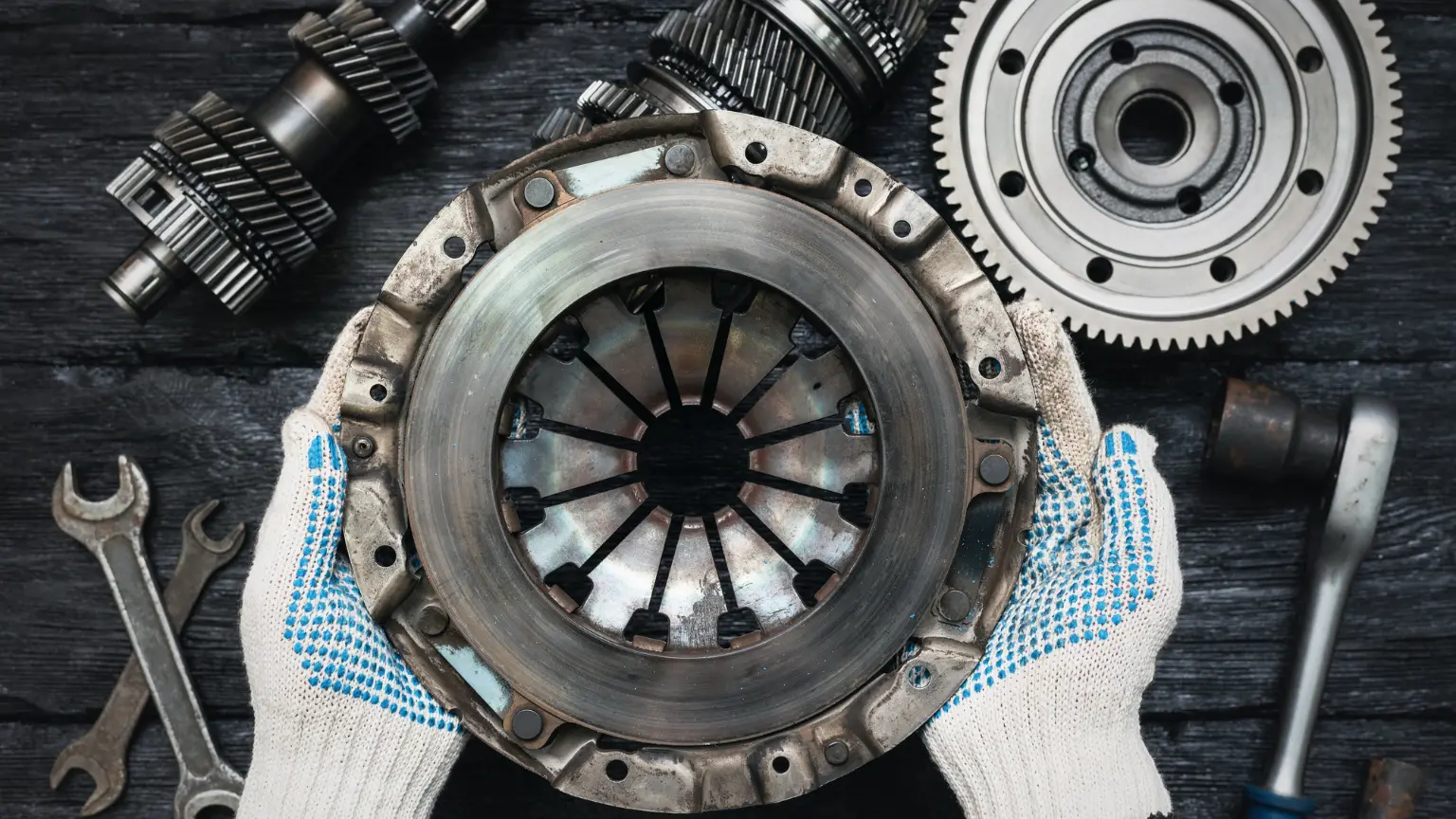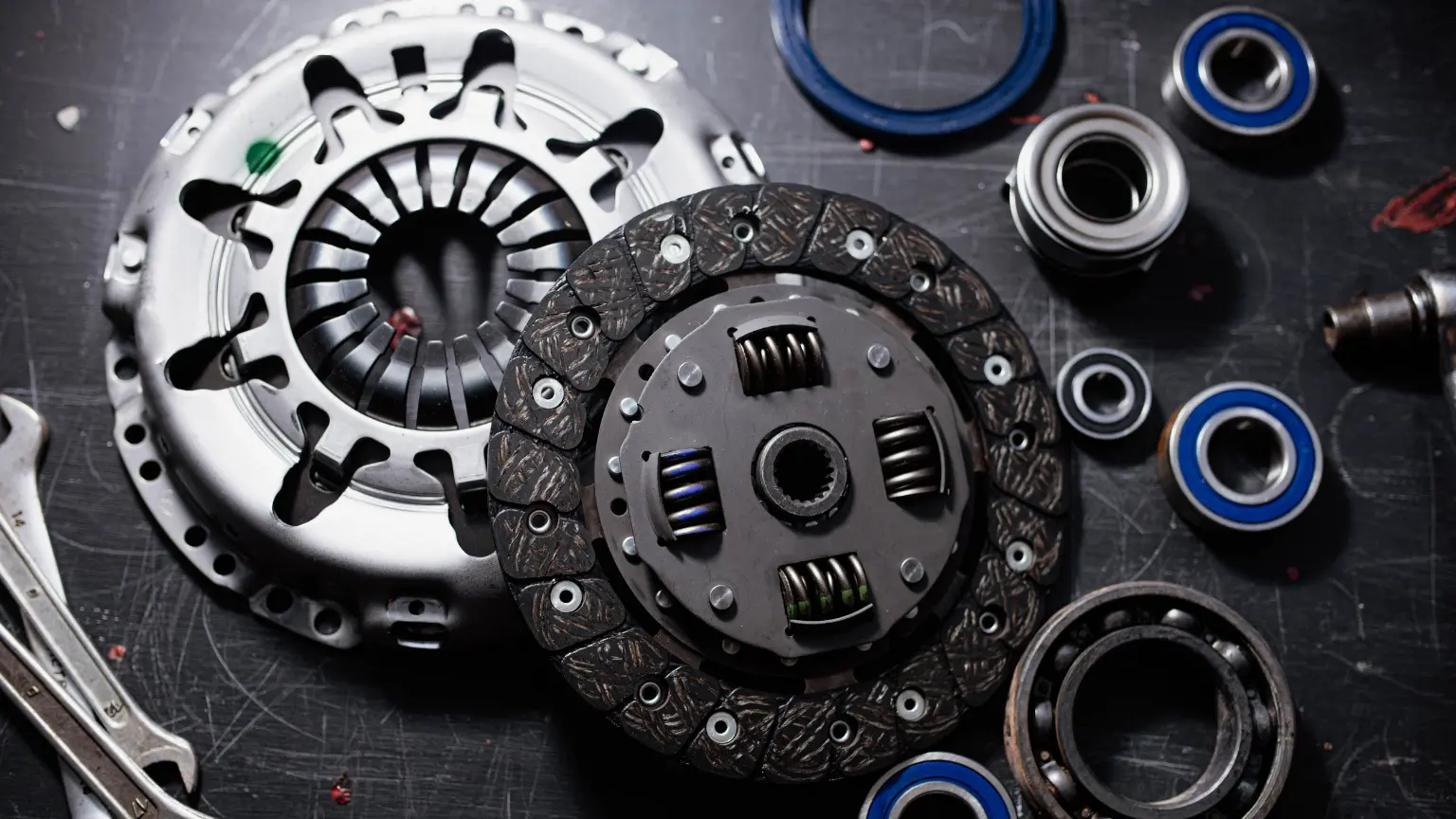How to Know If Your Car Needs Transmission Repair: A Quick Guide
Identify early transmission issues—noises, leaks, shifts—to avoid costly repairs. Learn home checks for slipping gears, warning lights, and when to call a specialist.

Detecting signs of transmission problems early can save you from costly repairs and prolonged downtime with your vehicle. Transmission issues can escalate quickly, turning what might be a minor fix into a major overhaul. Early detection allows you to address the problem before it worsens, preserving your car's mechanical integrity and ensuring road safety. By being attentive to how your car performs and sounds, you can catch early signs that something might be amiss.
Recognizing the Symptoms of Transmission Failure
Grinding Sounds
One of the most noticeable symptoms of a bad transmission is the presence of grinding sounds during gear shifts. These often indicate that the transmission components are worn or damaged and are struggling to engage properly. Listening to these sounds can help you catch transmission issues early, potentially saving you from a more complex and expensive repair job.
Unusual Noises and Sensations
Abnormal sounds like whining and sensations such as sluggishness or shuddering that could point to transmission trouble. Unusual sensations are often the first clues that your car’s transmission may be in trouble. Sensations like sluggish acceleration, hesitation when shifting, or a pronounced shuddering or vibration while driving can also point to transmission issues. These sensations may occur when the transmission struggles to engage or maintain the correct gear, often due to internal wear or malfunctioning components. Paying close attention to these abnormal noises and feelings allows you to catch transmission problems early, helping to prevent more severe damage and costly repairs down the road.

Delayed or Rough Shifting
When your transmission hesitates when shifting or shifts feel rough and abrupt, it's a clear sign of underlying problems. These transmission troubleshooting signs can be caused by a variety of issues, including low transmission fluid, worn gears, or faulty solenoids. Delayed or rough shifting not only makes driving less comfortable but also stresses other transmission components, increasing the risk of further damage.
Leaking Fluid
If you notice a red, sweet-smelling fluid under your car, it’s crucial to address this immediately. Leaking fluid can reduce lubrication and cooling in the transmission, leading to overheating and increased wear on transmission parts. Regular checks for leaks can prevent serious transmission repair signs from going unnoticed.
Burning Smell
A burning smell emanating from your transmission is a serious warning sign. This symptom usually suggests that the transmission fluid has overheated, degrading its quality and effectiveness. Overheated fluid can cause internal damage to the transmission, leading to inefficient gear shifts and increased friction.
Diagnosing Transmission Problems at Home
Checking for Slipping Gears
Slipping gears are a common symptom of a transmission repair needed situation. It occurs when the transmission unexpectedly slips out of gear while driving, or when it shifts between gears without any input from the driver. To diagnose this at home, pay attention to any sudden changes in engine noise or RPMs without acceleration.
Monitoring Dashboard Warning Lights
Your vehicle’s dashboard lights can serve as an immediate indicator for diagnosing transmission problems. The check engine light or a transmission temperature indicator can alert you to potential issues before they become severe. Regularly monitoring these lights can provide early warnings that should prompt further investigation with diagnostic tools or a professional technician to interpret the codes and assess the transmission's condition.
When to Consult a Transmission Repair Specialist
Choosing the Right Repair Shop
Making a well-informed decision involves several steps that can significantly influence the quality and cost-effectiveness of the repairs. The guide provided here aims to simplify this process by highlighting critical factors to consider when selecting a shop:
- Look for Certifications: When choosing a transmission repair shop, it's crucial to ensure that the technicians are certified. Certifications, especially those from ASE (Automotive Service Excellence), are a testament to the technician's expertise and commitment to quality in the automotive repair industry. ASE certification ensures that the technician has passed specialized tests and has the knowledge to handle complex automotive repairs, providing peace of mind that your vehicle is in capable hands.
- Check Reviews: Before deciding on a repair shop, it's advisable to read through customer reviews on various platforms such as Google, Yelp, and local auto forums. These reviews can provide valuable insights into the shop's quality of service and customer satisfaction. Positive reviews often indicate that the shop has a history of satisfied clients and reliable service, while negative reviews can alert you to potential issues with the shop’s practices or customer service.
- Compare Services: The capabilities of repair shops can vary significantly. Some might offer comprehensive diagnostic services that others do not. Ensuring that the shop you choose has the necessary technology and expertise to fully assess and repair your transmission is vital. This includes checking whether they have the latest diagnostic tools and equipment to identify issues and perform precise repairs accurately.
- Inquire About Warranties: A reputable transmission repair shop will offer warranties on its repairs. This is an important aspect as it shows the shop's confidence in their work and their willingness to stand behind it. Warranties protect you from additional costs should the repair not hold up over time, providing an additional layer of security and trust in the service provided.
- Ask for Estimates: Obtaining detailed written estimates for the repairs needed is a critical step in choosing a repair shop. These estimates allow you to compare costs across different shops and ensure that there are no surprises when the final bill arrives. A detailed estimate should include the cost of parts and labor, giving you a clear understanding of what you are paying for.
Selecting the right transmission repair shop is a decision that should not be taken lightly. By following the guidelines outlined above, you can ensure that your car receives the best possible care, prolonging its life and optimizing its performance. Make sure to take your time, do your research, and choose a shop that meets all your needs and expectations.
Getting Estimates and Understanding Costs
When considering transmission repairs, it is crucial to delve into the financial aspects thoroughly. Begin by requesting detailed estimates from potential repair shops. These estimates should itemize every cost, including labor, parts, and any miscellaneous charges such as shop supplies or disposal fees. This level of detail not only clarifies what each penny is going towards but also empowers you as a consumer to make informed decisions. Comparing these detailed estimates across different service providers can reveal significant price variations and help you understand the market better.

The importance of understanding what contributes to the cost cannot be overstated. Labor costs often constitute a significant portion of total expenses and can vary widely depending on the shop’s location, technicians' level of expertise, and the complexity of the required repairs. The cost of parts is another critical factor; some shops may use OEM (Original Equipment Manufacturer) parts, while others might opt for aftermarket parts, which can be less expensive but vary in quality. Understanding these differences is vital as they affect not only the initial repair cost but also the longevity and performance of your vehicle post-repair.
Exploring Transmission Repair Options
The value of seeking professional assessment and regular maintenance, including the benefits of choosing reputable repair shops and certified technicians.
Minor Transmission Repairs
Minor transmission repairs can often resolve small issues before they become major problems. These may include replacing external seals to fix leaks, changing the transmission filter, or repairing a single gear or sensor. Such repairs are generally cost-effective and can significantly extend the life of your transmission without the need for more extensive work.
Full Transmission Rebuilds
A full transmission rebuild is an extensive procedure that rejuvenates your vehicle's transmission system, enhancing its performance and longevity. This process is critical for maintaining the functionality and efficiency of your car, especially after significant mileage or wear:
- Complete Disassembly of the Transmission: The first step in a transmission rebuild is the complete disassembly of the transmission. This meticulous process involves removing every component from the transmission casing, including gears, bearings, gaskets, and more. Technicians carefully categorize each part to assess their condition. This stage is vital as it lays the groundwork for precise diagnostics and effective rebuilding. By stripping the transmission to its core, specialists can identify hidden issues that might not be apparent in assembled units, ensuring a thorough refurbishment.
- Thorough Inspection of All Components: Once disassembled, each part undergoes a rigorous inspection to determine its integrity and functionality. Specialists use various diagnostic tools and techniques to scrutinize every component, from microscopic inspections for cracks and wear to computerized tests for performance benchmarks. This comprehensive evaluation helps in pinpointing defective or worn-out parts that need replacement or repair. The inspection is critical as it guarantees that only fully functional and reliable components are used in the reassembly, ensuring the transmission operates smoothly and reliably.
- Replacement of Worn or Damaged Parts: This step involves replacing all identified worn or damaged parts, such as clutches, gears, and seals. High-quality parts are used to replace the old components. This replacement ensures that each part of the transmission meets or exceeds original specifications, contributing to the transmission's overall reliability and performance post-rebuild. Using superior parts helps in extending the life of the transmission, reducing the likelihood of future breakdowns.
Completing a full transmission rebuild can significantly extend the life of your vehicle and improve its performance. This investment not only restores the transmission to its optimal condition but also enhances the overall driving experience. By choosing a comprehensive rebuild, vehicle owners can ensure that their car remains reliable and efficient for many more miles.
Transmission Replacement Considerations
When considering a transmission replacement, several key factors need to be carefully evaluated to make an informed decision. This decision can significantly impact both the performance and economic value of your vehicle. Below are key factors that can influence your decision:
- Vehicle Age and Condition: For older or high-mileage vehicles, the cost-benefit analysis often favors transmission replacement over ongoing repairs. An aged vehicle with high mileage may not only require frequent repairs but also experience diminished repair effectiveness. In such cases, replacing the transmission can restore vehicle performance and reliability, potentially extending the vehicle's operational life and improving its resale value.
- Future Plans: Your intentions for the vehicle play a crucial role in deciding whether to replace the transmission. If you plan to keep the car for many years, investing in a new transmission might make sense to ensure long-term reliability and performance. However, if you're considering selling the vehicle shortly, the investment in a new transmission may not provide a favorable return, as the cost may not significantly increase the sale price.
- Availability of Parts: The availability and compatibility of the replacement transmission are vital. It is essential to source a transmission that matches your vehicle’s specifications to avoid potential mechanical conflicts. Using genuine, compatible parts ensures that the new transmission will operate as intended and won't lead to additional problems or void warranties. Checking with certified dealers or trusted mechanics for the right fit can prevent future complications.
It involves assessing the current condition and future outlook of your vehicle, understanding the financial implications, and ensuring the availability of suitable parts. By considering these factors, you can choose the option that best suits your circumstances and ensures your vehicle's continued functionality and value.
Preventative Maintenance to Avoid Transmission Issues
Regular Transmission Fluid Changes
Signs of low or leaking fluid, and related symptoms like burning smells or fluid puddles under the car is important. Changing the transmission fluid at recommended intervals is crucial for keeping your transmission functioning smoothly. Fresh fluid helps lubricate the transmission's moving parts, reducing wear and preventing overheating. Typically, manufacturers suggest changing the fluid every 30,000 to 60,000 miles, but this can vary based on vehicle usage and model. Consistently replacing old fluid with new can significantly decrease the likelihood of transmission repair signs developing.
Driving Habits That Protect Your Transmission
Driving habits have a profound impact on the longevity and reliability of your vehicle's transmission. It is well understood that transmissions, which serve as the bridge between the engine's power and the vehicle's wheels, are susceptible to wear and tear from harsh driving practices. Excessive towing, for instance, places additional strain on the transmission by increasing the workload, which can lead to overheating and premature failure. Similarly, shifting gears while the vehicle is moving can disrupt the synchronization of the transmission's components, leading to increased friction and eventual wear.

Additionally, a driver's acceleration and deceleration have a significant impact on the transmission’s health. Aggressive driving, characterized by rapid acceleration and abrupt braking, forces the transmission to work harder, which accelerates wear. Adopting smoother acceleration and deceleration patterns can greatly reduce the mechanical strain on the transmission. Educating drivers on the benefits of these smoother techniques can lead to more mindful driving, which not only protects the transmission but also contributes to safer roadways.
Detecting and addressing transmission issues promptly can be the difference between a minor repair and a major overhaul. As discussed, being vigilant about unusual noises, shifting delays, fluid leaks, and burning smells is crucial in early diagnosis. Such attentiveness to your vehicle's symptoms ensures that potential problems are addressed before they escalate, saving time and money while extending the lifespan of your car. Regular maintenance, such as fluid changes and checking for leaks, also plays a significant role in transmission health. Beyond maintenance, adapting your driving style to be less aggressive and more mindful of gear shifts can significantly reduce transmission wear, promoting a smoother ride and longer vehicle life. By integrating these practices, you not only maintain the mechanical integrity of your car but also contribute to safer driving conditions for everyone on the road. Keep your vehicle running smoothly and avoid costly transmission failures by scheduling expert service today at Trans Medic Transmissions.
Follow a maintenance program
Ante gravida id aenean quis egestas risus nam amet nullam leo diam diam aliquam eu eu malesuada arcu rhoncus suspendisse nulla mattis ut amet sagittis in justo egestas.

search for a trusted mechanic
Lorem ipsum dolor sit amet, consectetur adipiscing elit lobortis arcu enim urna adipiscing praesent velit viverra sit semper lorem eu cursus vel hendrerit elementum morbi curabitur etiam nibh justo, lorem aliquet donec sed sit mi dignissim at ante massa mattis.
- Neque sodales ut etiam sit amet nisl purus non tellus orci ac auctor
- Adipiscing elit ut aliquam purus sit amet viverra suspendisse potent
- Mauris commodo quis imperdiet massa tincidunt nunc pulvinar
- Excepteur sint occaecat cupidatat non proident sunt in culpa qui officia
Check the air pressure in your tires
Vitae congue eu consequat ac felis placerat vestibulum lectus mauris ultrices cursus sit amet dictum sit amet justo donec enim diam porttitor lacus luctus accumsan tortor posuere praesent tristique magna sit amet purus gravida quis blandit turpis.
Review your suspension frequently
At risus viverra adipiscing at in tellus integer feugiat nisl pretium fusce id velit ut tortor sagittis orci a scelerisque purus semper eget at lectus urna duis convallis. porta nibh venenatis cras sed felis eget neque laoreet suspendisse interdum consectetur libero id faucibus nisl donec pretium vulputate sapien nec sagittis aliquam nunc lobortis mattis aliquam faucibus purus in.
- Neque sodales ut etiam sit amet nisl purus non tellus orci ac auctor
- Adipiscing elit ut aliquam purus sit amet viverra suspendisse potent
- Mauris commodo quis imperdiet massa tincidunt nunc pulvinar
- Excepteur sint occaecat cupidatat non proident sunt in culpa qui officia
Service your vehicle as regularly as posible
At risus viverra adipiscing at in tellus integer feugiat nisl pretium fusce id velit ut tortor sagittis orci a scelerisque purus semper eget at lectus urna duis convallis. porta nibh venenatis cras sed felis eget neque laoreet suspendisse interdum consectetur libero id faucibus nisl donec pretium vulputate sapien nec sagittis aliquam nunc lobortis mattis aliquam faucibus purus in.
“Nisi quis eleifend quam adipiscing vitae aliquet bibendum enim facilisis gravida neque velit euismod in pellentesque”
Conclusion
Eget lorem dolor sed viverra ipsum nunc aliquet bibendum felis donec et odio pellentesque diam volutpat commodo sed egestas aliquam sem fringilla ut morbi tincidunt augue interdum velit euismod eu tincidunt tortor aliquam nulla facilisi aenean sed adipiscing diam donec adipiscing ut lectus arcu bibendum at varius vel pharetra nibh venenatis cras sed felis eget.


